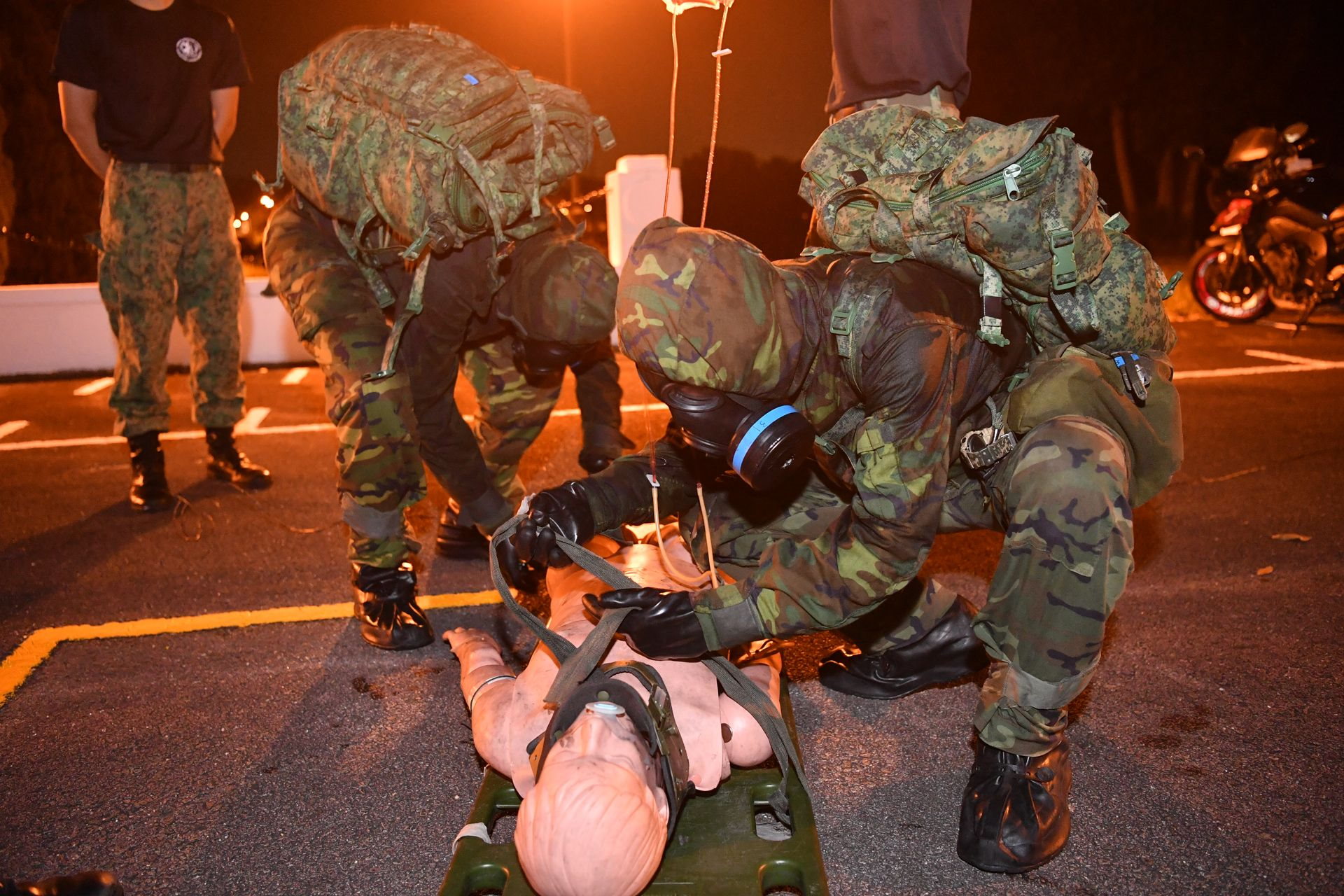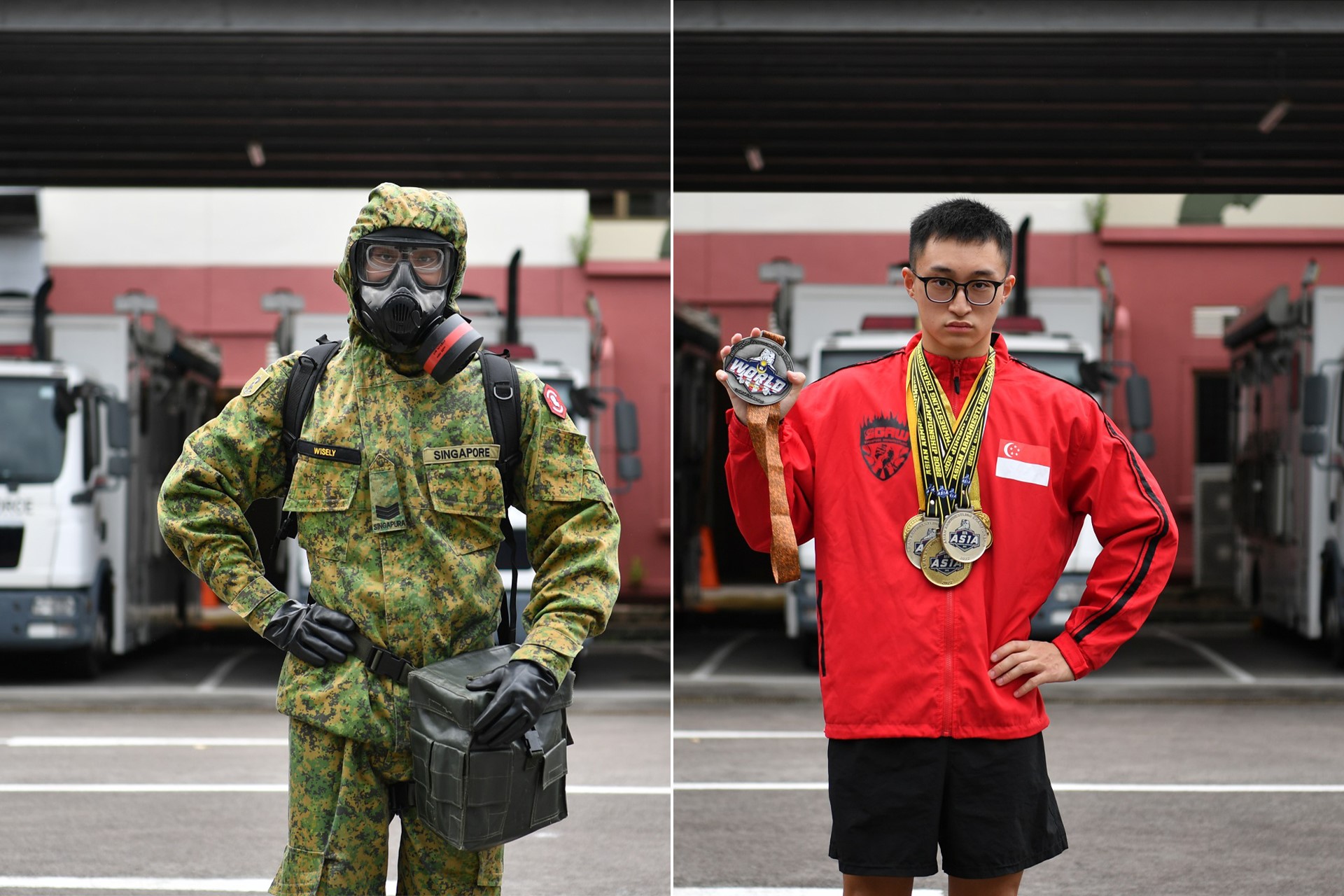MRF: Ready to respond
These troopers are ready to swing into action if a Chemical, Biological, Radiological and Explosive (CBRE) attack happens. Join the combat medics of the Medical Response Force (MRF) as they deal with casualty management and on-site decontamination during a night training exercise.// Story Chia Chong Jin
// Photos Chai Sian Liang
Injured or unconscious casualties are classified as P1 (the most seriously injured) or P2, while those who can still walk are classified P3. Casualties who have succumbed to their injuries are classified P0.
After the casualties are assessed and stabilised, they will be evacuated to hospitals via ambulances for further treatment.

